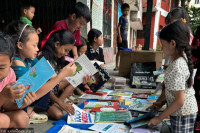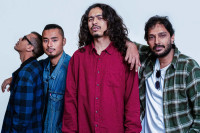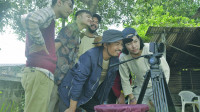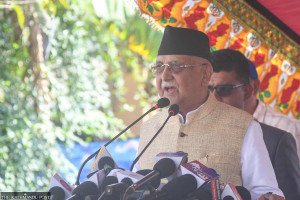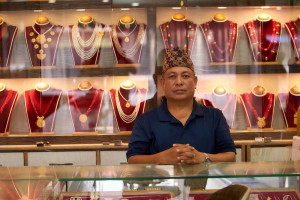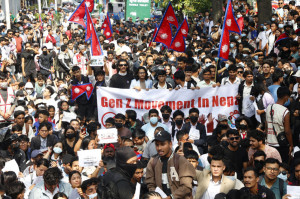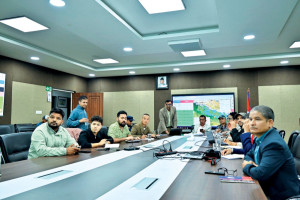Entertainment
Inter-caste marriage: When traditions blend
It was a warm day in Chaitra An old man was grazing his buffalo in a field in Nijgad when his grandson appeared with a petite woman who looked particularly tiny by his side
Ashish Poudyal
It was a warm day in Chaitra. An old man was grazing his buffalo in a field in Nijgad when his grandson appeared with a petite woman who looked particularly tiny by his side.
“Who is she?” asked the grandfather.
“She’s your granddaughter in-law, Grandpa,” the grandson replied.
A typical Brahmin, the grandfather was obviously judgmental about the young woman’s caste which was not the same as his. He was particularly weighing in and probably upset too. However, he was a progressive old man in disguise and hence accepted the love of his grandson’s life. Besides, what other option did he have?
It became the breaking news in the family and headlined every family conversation. Relatives who lived in the nook and crannies of Kathmandu, Bhaktapur and Lalitpur couldn’t stop talking about the odd couple, their rash decision to marry into another caste and the old man’s strangely pleasant response.
It was also a matter of laughter for most. It was like a practical joke. How could a Brahmin family take in a Newar dulahi from Kamalbinayak?
The bride and groom had already made their choice and married one another. There was no undo button. The surprise came in when despite knowing that they had already tied knots, the bride’s family demanded that there be a proper, elaborate marriage ceremony and according to their rites and rituals. And it was followed by a bigger surprise—the groom’s family accepted with open arms.
The big day saw the weddings of two sisters at once. One sister was of course marrying the Brahmin while the other was marrying into a fairly modern Newar family.
The confusion began the moment we, the Brahmin family stepped into the festive premises of the wedding. We waited for hours until the Newar groom came in. Because both the grooms were to be welcomed simultaneously, there was no fire, no priest, and no food for hours.
We were completely amused by the ‘private’ marriage procedures that took place inside a room and on a rooftop. Most people were hesitant to walk into the house to watch the unique process.
I noticed a major difference between how Newars and Brahmins get married. In the first phase, when the marriage commences, Newars apparently invite only very close relatives and most rituals are very private. Us Brahmins on the other hand, invite Janti—friends and family—from all over the place and conduct rituals in a massive, public setting.
The other interesting thing was the difference in food that was allowed into the after party. For instance, the snacks served by the Newars are largely non-vegetarian and 90 percent of the meat served is buff. Newars also serve alcohol in every celebration. Hence the wedding saw a lot alcohol—aila.
Both buff and raksi are regarded as ‘corrupt and sinful’ in Brahmin culture. However, thanks to new generation of progressive Brahmins who comply so little with the older generation, this was not a big deal. The only rule people seemed to comply with was ‘eat, drink and be merry!’ Although we did have to help the older generation choose the ‘right’ kind of food so that their soul remained clean.
Honestly, the wedding surpassed everybody’s expectations. While there were many surprises here and there, it went swiftly. I still remember this one instance when a waiter offered momos to a woman and she asked “Raanga ho?” and the waiter replied in the affirmative. There was an awkward silence before they both broke out into laughter.
It was wonderful to see that nobody complained about another’s culture. While people did take note of each other’s culture, and acknowledge it. Nobody complained about the cultural difference.
Newars and Brahmins might share some religious values but their traditions vary vastly. How beautiful it is then that two people are willing to share not only their lives with each other but are also bringing their cultures and traditions together.
At the end of the day we are all equal. We are all skin and bones.
However, I am aware that we are among the lucky few. The bride and groom are among the lucky few. In a society where inter-caste marriage is still highly criticised, not everybody gets a family that approves the love of your life. There is always too much prejudice involved.
Our generation is still breaking through. We are still struggling to make the society accept it as normal.
I know for a fact that the Newar dulahi might face discrimination from her new family every now and then. But I am hopeful that change will come within few months’ time.
Ashish Poudyal is a 2 graduate from Little Angels




 17.12°C Kathmandu
17.12°C Kathmandu



